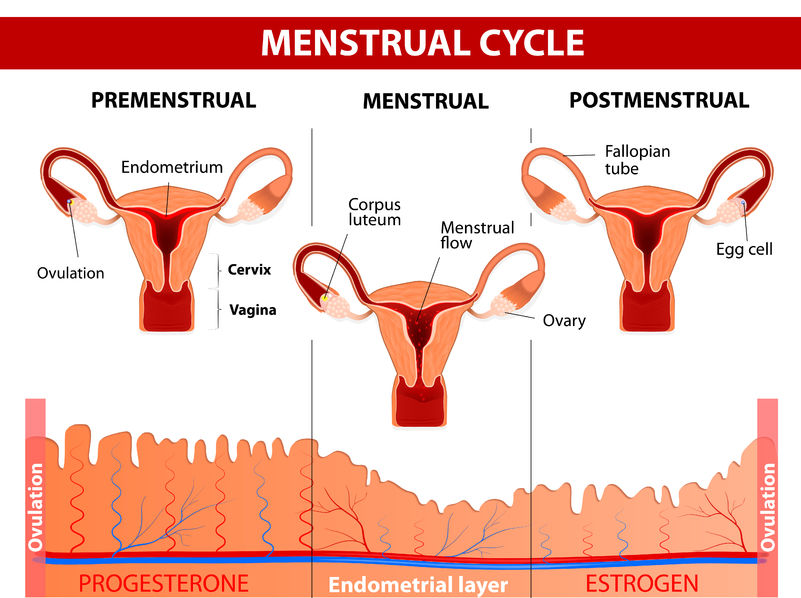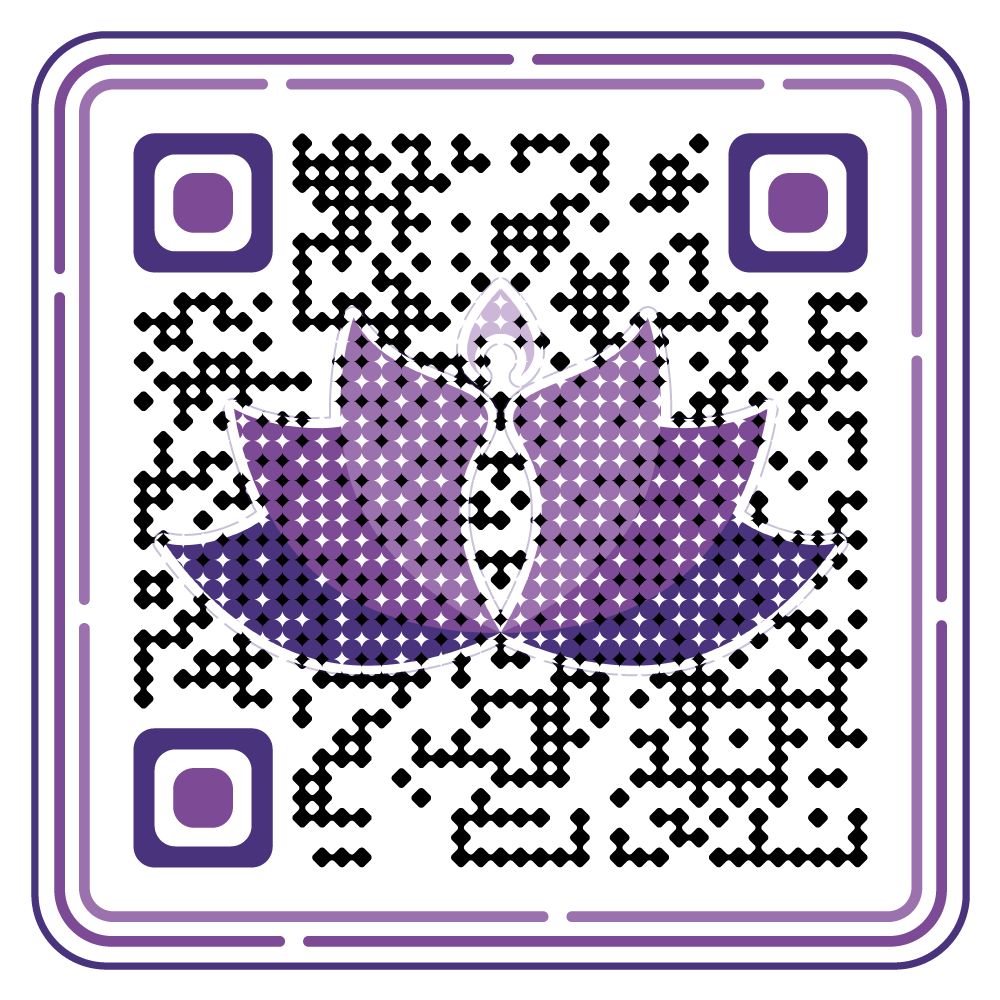The menstrual cycle starts with the first day of the period and ends when the next period begins.Hormone signals are sent back and forth between the brain and the ovaries, causing changes to the sacs in the ovaries that contain eggs (follicles) and the uterus.
The first part of the cycle prepares an egg to be released from the ovary and builds the lining of the uterus.
The second part of the cycle prepares the uterus and body to accept a fertilized egg, or to start the next cycle if pregnancy doesn’t happen The menstrual cycle is more than just the period. In fact, the period is just the first phase of the cycle.
The menstrual cycle is actually made up of two cycles that interact and overlap—one happening in the ovaries and one in the uterus. The brain, ovaries, and uterus work together and communicate through hormones (chemical signals sent through the blood from one part of the body to another) to keep the cycle going. A menstrual cycle starts with the first day of the period and ends with the start of the next period.
An entire menstrual cycle usually lasts between 24 and 38 days (1), but the length may vary from cycle to cycle, and may also change over the years. Cycle length changes between menarche (when periods first start during puberty) and menopause,
Menstruation: The period—the shedding of the uterine lining. Levels of estrogen and progesterone are low.
The follicular phase: The time between the first day of the period and ovulation. Estrogen rises as an egg prepares to be released.
The proliferative phase: After the period, the uterine lining builds back up again.
Ovulation: The release of the egg from the ovary, mid-cycle. Estrogen peaks just beforehand, and then drops shortly afterwards.
The luteal phase: The time between ovulation and before the start of menstruation, when the body prepares for a possible pregnancy. Progesterone is produced, peaks, and then drops.
The secretory phase: The uterine lining produces chemicals that will either help support an early pregnancy or will prepare the lining to break down and shed if pregnancy doesn’t occur.
The first part of the cycle Uterus: Menstruation When From the time bleeding starts to the time it ends.What: Old blood and tissue from inside the uterus is shed through the vagina.
Each menstrual cycle starts with menstruation (the period). A period is the normal shedding of blood and endometrium (the lining of the uterus) through the cervix and vagina. A normal period may last up to 8 days , but on average lasts about 5 or 6.
Ovaries: Follicular phase When From the start of the period until ovulation. What: Signals from the brain tell the ovaries to prepare an egg that will be released.During the period, the pituitary gland (a small area at the base of the brain that makes hormones) produces a hormone called follicle stimulating hormone (FSH). FSH tells the ovaries to prepare an egg for ovulation (release of an egg from the ovary). Throughout the menstrual cycle, there are multiple follicles (fluid filled sacs containing eggs) in each ovary at different stages of development . About halfway through the follicular phase (just as the period is ending) one follicle in one of the ovaries is the largest of all the follicles at about 1 cm. This follicle becomes the dominant follicle and is the one prepared to be released at ovulation. The dominant follicle produces estrogen as it grows, which peaks just before ovulation happens. For most people, the follicular phase lasts 10-22 days, but this can vary from cycle-to-cycle.Uterus: Proliferative phase When: From the end of the period until ovulation.
What: The uterus builds up a thick inner lining. While the ovaries are working on developing the egg-containing follicles, the uterus is responding to the estrogen produced by the follicles, rebuilding the lining that was just shed during the last period.
This is called the proliferative phase because the endometrium (the lining of the uterus) becomes thicker.
The endometrium is thinnest during the period, and thickens throughout this phase until ovulation occurs.The uterus does this to create a place where a potential fertilized egg can implant and grow.
Interlude: Ovulation When: About midway through the cycle, but this can change cycle-to-cycle. Ovulation divides the two phases of the ovarian cycle (the follicular phase and the luteal phase).What: An egg is released from the ovary into the fallopian tube.The dominant follicle in the ovary produces more and more estrogen as it grows larger.
The dominant follicle reaches about 2 cm (0.8 in)—but can be up to 3 cm—at its largest right before ovulation . When estrogen levels are high enough, they signal to the brain causing a dramatic increase in luteinizing hormone (LH).
This spike is what causes ovulation (release of the egg from the ovary) to occur. Ovulation usually happens about 13-15 days before the start of the next period.
The second part of the cycle Ovary: Luteal Phase When: From ovulation until the start of the next period.What: The sac that contained the egg produces estrogen and progesterone.Once ovulation occurs, the follicle that contained the egg transforms into something called a corpus luteum and begins to produce progesterone as well as estrogen . Progesterone levels peak about halfway through this phase. The hormonal changes of the luteal phase are associated with common premenstrual symptoms that many people experience, such as mood changes, headaches, acne, bloating, and breast tenderness.If an egg is fertilized, progesterone from the corpus luteum supports the early pregnancy . If no fertilization occurs, the corpus luteum will start to break down between 9 and 11 days after ovulation.
This results in a drop in estrogen and progesterone levels, which causes menstruation. The luteal phase typically lasts about 14 days, but between 9 and 16 days is common Uterus Secretory Phase When From ovulation until the start of the next period. What: The lining of the uterus releases or secretes chemicals that will either help an early pregnancy attach if an egg was fertilized, or help the lining break down and shed if no egg was fertilized. During this phase, the endometrium prepares to either support a pregnancy or to break down for
menstruation. Rising levels of progesterone cause the endometrium to stop thickening and to start preparing for the potential attachment of a fertilized egg.
The secretory phase gets its name because the endometrium is secreting (producing and releasing) many types of chemical messengers.
The most notable of these messengers are the prostaglandins, which are secreted by endometrial cells and cause changes to other cells nearby.





